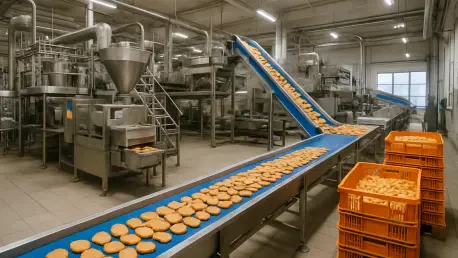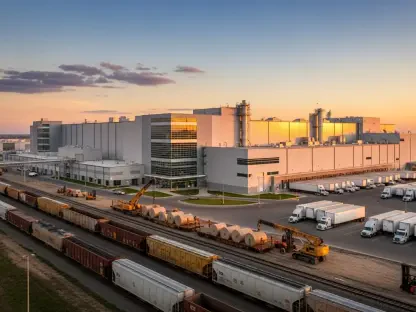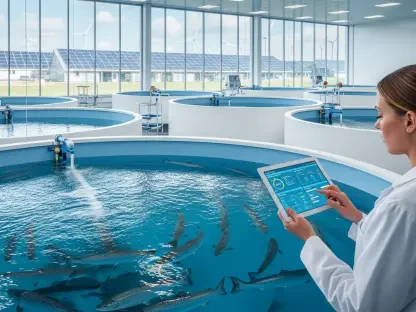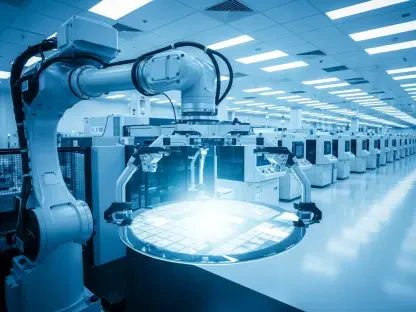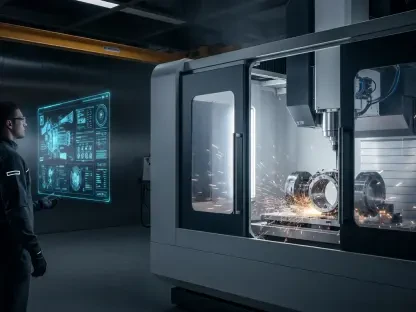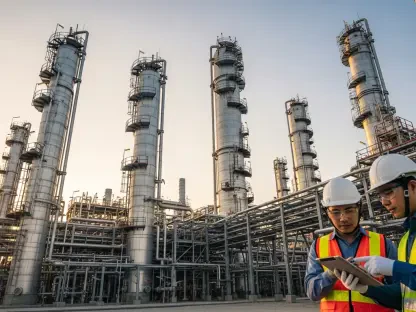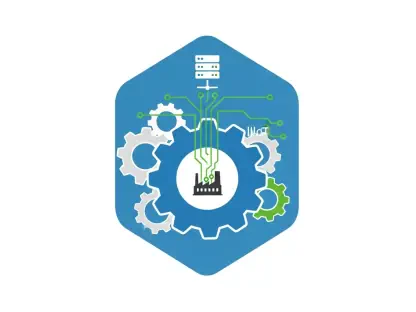In the high-stakes world of food production, the threat of product recalls looms large, posing not only financial burdens but also severe damage to brand reputation that can take years to rebuild, while each year contamination issues, undeclared allergens, and other safety failures disrupt operations. Australian manufacturers face intense scrutiny from regulatory bodies like Food Standards Australia New Zealand (FSANZ). The numbers paint a grim picture: FSANZ reported 87 recalls in 2023, a notable jump from the decade-long average of 79. These incidents drain resources and erode consumer trust at an alarming rate. Yet, amidst this challenge, a powerful ally has emerged in the form of digital tools. Technologies such as smart sensors, real-time monitoring systems, and predictive analytics are transforming how the industry tackles safety risks. By identifying potential problems before they escalate, these innovations offer a proactive path to compliance and protection, reshaping the landscape of food manufacturing for the better.
The Devastating Impact of Recalls
The financial toll of product recalls in the food industry is nothing short of catastrophic, often running into millions of dollars for a single incident. A stark example from Australia in 2015 involved contaminated berries, resulting in a staggering $9.4 million in direct costs and lost revenue, alongside an additional $3.8 million in destroyed inventory. Beyond the immediate monetary loss, recalls disrupt production schedules, force extensive cleanup efforts, and contribute to significant environmental waste through discarded products. The ripple effects extend to supply chain partners and retailers, amplifying the economic fallout. Perhaps most damaging is the blow to consumer confidence—once trust is broken, rebuilding it demands substantial time and investment. This harsh reality underscores why manufacturers are under immense pressure to prevent such events, pushing them toward solutions that can safeguard both their finances and their standing in the market.
Regulatory demands are intensifying the urgency to address recall risks, adding layers of complexity to food production. FSANZ has rolled out stricter guidelines, including mandatory temperature sensor calibration every six months with precision within ±1°C, as well as updated allergen labeling requirements. These standards aim to ensure safety at every stage, from raw material handling to final packaging, but they also challenge manufacturers to maintain meticulous control over their processes. Non-compliance can result in hefty fines, legal repercussions, and, of course, recalls. Industry specialists have observed that regulatory bodies are increasingly focusing on proactive safety measures, signaling that outdated practices are no longer viable. This evolving landscape is a clear call to action for companies to adopt more reliable systems capable of meeting these rigorous expectations and protecting public health.
Flaws in Conventional Safety Practices
Many food production facilities continue to rely on manual monitoring and outdated tools like chart recorders, which are inherently prone to error. These traditional methods often involve workers manually logging data, a process that risks oversight, forgotten entries, or even deliberate falsification to save time. Such gaps create dangerous blind spots where issues like temperature deviations or equipment malfunctions go unnoticed until it’s too late. The lack of real-time insight means that by the time a problem is identified, contaminated or substandard products may already be in distribution, heightening the likelihood of a recall. This unreliability not only jeopardizes compliance with stringent regulations but also puts consumer safety at risk, exposing companies to both legal and reputational consequences that could have been avoided with more robust systems.
The resistance to moving away from familiar, outdated practices compounds the problem in numerous food manufacturing settings. Even when the shortcomings of manual systems are evident, there’s a hesitancy to invest in modern alternatives due to perceived costs or the complexity of transitioning to new technology. This inertia often stems from a lack of understanding about the long-term benefits of digital upgrades or a fear of disrupting established workflows. However, clinging to inefficient tools creates a vicious cycle—errors persist, risks mount, and the potential for costly recalls grows. Breaking this cycle requires a shift in mindset, recognizing that the upfront investment in updated systems pales in comparison to the devastating losses from safety failures. Addressing this cultural barrier is just as critical as the technology itself in preventing future crises.
Harnessing Digital Innovations for Safety
Digital tools are revolutionizing food safety by offering real-time monitoring and early detection capabilities that traditional methods simply cannot match. Smart sensors now track critical parameters like temperature, pressure, and flow with pinpoint accuracy, instantly alerting operators to any deviations that could signal a problem. This immediate feedback allows for swift corrective action, stopping issues before they escalate into full-blown safety hazards. Artificial intelligence (AI) enhances this further through predictive maintenance, analyzing historical data to forecast equipment failures—such as a pump breakdown—weeks in advance. By shifting from a reactive to a proactive approach, these technologies empower manufacturers to maintain consistent product quality, drastically reducing the chances of contamination or other recall-triggering events.
Specific stages of food production, particularly high-risk areas like mixing, filling, and cleaning-in-place (CIP), see immense benefits from digital oversight. Modern conductivity sensors, for instance, play a crucial role during CIP processes by distinguishing between cleaning chemicals and lingering product residues, ensuring thorough sanitation. Inadequate cleaning can lead to bacterial growth, a common cause of contamination recalls, but these sensors eliminate guesswork by providing precise data. This targeted application of technology addresses vulnerabilities where manual checks often fall short, creating a stronger defense against safety breaches. Beyond prevention, the detailed records generated by digital systems also support traceability, making it easier to pinpoint and resolve issues if they do arise, further minimizing the scope of potential recalls.
Aligning Safety with Efficiency and Sustainability
Beyond preventing recalls, digital tools offer a dual advantage by enhancing operational efficiency in food production. Many facilities overcompensate during processes like cleaning or storage—extending durations or increasing temperatures—to guarantee safety, but this often results in wasted resources. Digital systems provide accurate, real-time data that allows for precise calibration of these operations, eliminating unnecessary excess. For instance, sensors can confirm when a cleaning cycle is complete without extending it “just in case,” saving water, energy, and time. This optimization not only cuts costs but also streamlines production timelines, enabling manufacturers to meet demand without compromising safety. The efficiency gains from such technology demonstrate that protecting consumers and improving profitability are not mutually exclusive goals.
Sustainability is another critical area where digital solutions make a significant impact in the food industry. Unreliable sensors or manual errors can lead to entire batches of food being discarded due to suspected contamination, contributing to substantial waste and environmental harm. By contrast, the precision of modern digital tools ensures that only affected products are removed, minimizing loss. Additionally, optimized processes driven by accurate data reduce energy and water consumption, aligning with broader environmental targets. This intersection of safety and sustainability highlights a holistic benefit—manufacturers can protect public health while also advancing eco-friendly practices. As regulatory and consumer expectations increasingly demand greener operations, digital adoption becomes a strategic move to stay competitive and responsible.
Driving an Industry-Wide Transformation
The food and beverage sector is witnessing an undeniable shift toward digital transformation, fueled by the recognition that manual systems are unsustainable under today’s rigorous safety standards and consumer expectations. Industry consensus points to the necessity of adopting smarter tools like AI-driven analytics and advanced sensors to manage risks proactively. This movement isn’t just about avoiding recalls; it’s about redefining how food safety integrates with overall business objectives. The growing focus on digitalization reflects a broader understanding that technology can address multiple challenges simultaneously—compliance, efficiency, and public trust. As more companies witness the tangible benefits, the momentum for widespread adoption continues to build, signaling a future where digital solutions are the norm rather than the exception.
A practical approach to this transformation involves integrating existing hardware with accessible software, dispelling myths that digitalization requires a complete overhaul or prohibitive costs. Many off-the-shelf solutions can leverage data already generated by current systems, enhancing traceability and compliance without significant investment. This strategy lowers the barrier to entry, making advanced tools viable for a wider range of manufacturers, from large corporations to smaller operations. By focusing on incremental upgrades rather than sweeping changes, the industry can achieve safer production environments more quickly and affordably. This pragmatic mindset is key to accelerating the shift away from outdated practices, ensuring that safety innovations are within reach for all players in the market.
Building a Safer Future Through Technology
Reflecting on the journey, it’s evident that the food industry has grappled with significant challenges from recalls, driven by the high costs and limitations of manual systems. Digital tools have stepped in as a transformative force, with smart sensors and predictive analytics proving their worth in detecting issues early and preventing crises. The adoption of these technologies has addressed critical vulnerabilities in production stages like cleaning-in-place, while also aligning safety with efficiency and sustainability goals. Looking ahead, the next steps involve accelerating this digital shift by prioritizing scalable solutions that integrate seamlessly with existing setups. Manufacturers should focus on fostering a culture open to change, investing in training to ease the transition, and collaborating with regulators to refine standards. By committing to these actions, the industry can build on past lessons to create a future where recalls become a rarity, and consumer safety stands as an unshakable priority.
